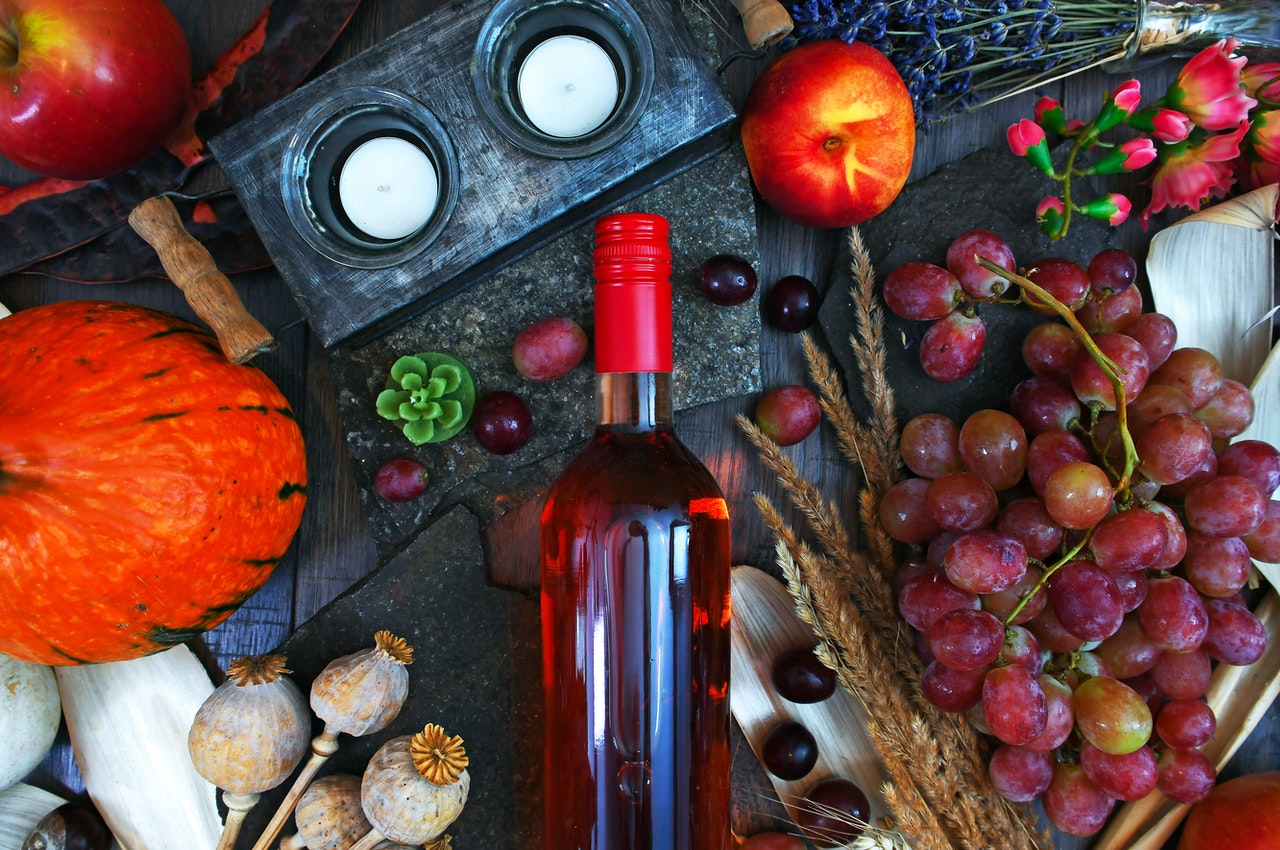When it comes to hosting a wine tasting party, the star of the show (aside from the wine) is the food. Food has the power to elevate the taste of wine. And as famous chef Julia Child once exclaimed, “Wine is meant to be with food—that’s the point of it!”
But when it comes to creating a menu for your wine tasting party, it’s easy to get overwhelmed by all of the amazing food choices out there. No doubt you’ve heard that certain foods pair well with certain wines, but which pairs with what? If you’re at a loss of how to create a menu for your tasting party, this guide is for you. Below, we share tips on building a delectable and unforgettable menu that will delight your guests.
The Basic Rules of Wine Pairing
When it comes to wine and food pairing, there are a few things about the wine you should keep in mind.
Weight
When talking in terms of wine, “weight” can be described as the presence of alcohol. The more alcohol present in the wine, the heavier that wine is said to be. Weight and body are closely related. Body is another term you should be familiar with. Body refers to the heaviness of the liquid, or how it feels in your mouth. It’s not the flavor but rather the viscosity (i.e. thickness).
Wine can be broken down into three body types: light body, medium body, and full body.
Light bodied wines contain between 7.5% to 12.5% alcohol. White wines are generally considered light bodied.
Medium bodied wines contain between 12.5% to 13.5% alcohol. These include Rosés, Grenaches, and Pinot Noirs (although some Pinot Noirs can be light wines, too).
Full bodied wines contain 13.5% or more alcohol. These include reds like Cabernet Sauvignon and Shiraz. Chardonnay and Viognier are both examples of full bodied white wines because they have higher alcohol content.
So what does body and weight have to do with food pairing?
The weight of the wine should match the weight of the food.
If you’re tasting lighter wines, you should serve lighter dishes. This way, your food choice won’t overpower the taste of the wine. And for heavier, full bodied wines, you should opt for a weightier meal that can stand up to the stronger taste and greater alcohol content. It’s the difference between serving a hearty lasagna (which would pair well with a full bodied red like Burgundy) or serving a dessert tray (which would work well with a White Zinfandel).

Acidity
As one of the four fundamental traits in wine, acidity is present in all wines. In some wines, tannins can mask the taste of acidity, but in other wines (primarily whites where there are fewer tannins present), acidity is much more noticeable.
Acidity creates a tart taste in the wine and, when paired with creamy foods, is said to “cut through the richness.” This is why many prefer to pair acidic wines with either creamy or acidic foods. Wines like Pinot Grigio and Chianti (a low-tannin, high acidity red) can work well with acidic foods like tomato sauces and citrus-based entrees.
Sweetness
Sweetness is another characteristic trait found in wine. As you can probably guess, sweetness describes the level of residual sugar found in the wine.
As an easy-to-remember rule of thumb, sweet wines should be paired with sweet foods. Additionally, the wine should be the sweetest thing you taste. This is why it's called a dessert wine. It is the dessert. But it works best when served with a food that plays off of its natural sweetness. Think: cobbler, pie, cake.
However, you can also contrast the sweetness of the dessert wine with a savory item. Salty or spicy flavors can often work well together with the dessert wine. For salty, think potato chips, french fries, even honey-glazed ham. For spicy, think jalapenos or even hotter, if you dare.
Tannins
Tannins are naturally occurring chemical compound preservatives in wine that also give it texture, otherwise known as wine's trademark dryness and lip pucker. Tannins are found in the grape's skin, seeds, and stems. While tannins can be produced in any wine, they're most prominent in red wines due to the wine-making process. Reds are made with the grape skins on, and grape skins house tannins. This is why red wines tend to be drier than whites, which undergo a different process.
Because tannins impart a dry and bitter taste, they don't work well with salty foods. Salty foods tend to enhance the bitterness in the tannins. Wines that are rich in tannins do better when paired with high fat foods, such as steak. This is why Cabernet Sauvignon is a go-to classic with ribeye and Syrah is a match for the porterhouse.

Other Factors to Consider
In addition to the traits of wine, you should also consider the flavors that exist in foods when determining what to serve on your wine tasting menu.
Saltiness
Some foods taste better when salty. These foods include olives, oysters, pretzels, tortilla chips, and the list goes on. As we mentioned above, tannin-rich wines don’t pair well with salty foods. However, dry, sparkling, acidic, or fruity wines create a flavor explosion when paired with salty foods.
Wines that work well with salty foods include: Chardonnay
Fatness
To bring out the flavor in a high-fat food, pair with a high-tannic wine. But be careful that the food doesn't also have high salt content because that can create a bitter taste. Fat and tannins work well together because the fat reduces the wine's bitterness and the tannins cut through the fat's richness.
Wines that work well with fatty foods include: Cabernet Sauvignon
Spiciness
A spicy food can be paired with a sweet wine as a complement. Sweet wines can cool off spicy foods. Spicy foods can also be served with an acidic, low alcohol wine that can bring sharp contrast to the dish’s heat.
Wines that work well with spicy foods include: Riesling, Syrah
Light Bodied Wine and Food Classic Pairings
Appetizers
Caviar
Cheese
Desserts
Pork
Seafood
Medium Bodied Wine and Food Classic Pairings
Barbeque
Game Birds
Poultry
Full Bodied Wine and Food Classic Pairings
Beef
Lamb
Pasta
Dessert Wine and Food Classic Pairings
Chocolate (dark and milk)
Salty nuts
Pastries
Cheeses (such as cheddar)
More Classic Food Pairings
- Barbera and Grilled Vegetables
- Beaujolais and Cheese
- Burgundy and Mushrooms
- Cabernet Sauvignon and Steak
- Champagne and Caviar
- Chardonnay and White Cream-Based Sauces
- Chianti and Tomato-Based Pasta
- Lambrusco and Cheesecake
- Malbec and Barbeque
- Merlot and Roast
- Moscato and Fruits
- Pinot Grigio and Shrimp
- Pinot Noir and Lamb
- Riesling and Cold Cuts
- Rosé and Grilled Foods
- Sauvignon Blanc and Salmon
- Sparkling Wine and Nuts
- Syrah and Spicy Items
- Viognier and Lobster
- Zinfandel and Potato Chips
When pairing wine with food, remember that the goal is to strike a balance. Neither the wine nor the food should overpower the other.
Important note: Keep in mind that your guest’s preferences, allergies, and dietary restrictions play a huge role in what foods and wines you serve. Generally speaking, there’s always a substitute available if you’re unable to serve a specific dish.
Final Thoughts
To echo the wisdom of Julia Child, wine is meant to be enjoyed with food. When well-matched, the food you serve will enhance the taste of the wine (and vice versa). While the above tips can act as a starting point for classic food/wine combinations, remember that part of the fun is coming up with your own pairings. Don’t be afraid to take a risk and try your own pairings. Let us know if you come up with anything delicious!


